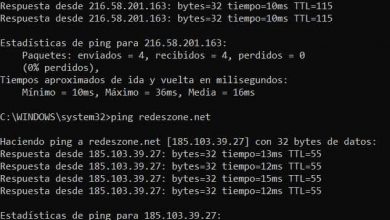Half Duplex vs Full Duplex: main differences and operation

In telecommunications, we can find several terms and characteristics that allow communication to take place normally. In this article, we are going to talk about Duplex. More precisely, we will see the differences between Half Duplex and Full Duplex . Basically we can say that it allows communications to use simultaneous send and receive channels.
What does Duplex mean in communications?
First, we will explain what means the term Duplex . It refers, in itself, to the ability to send and receive data. Duplex is often used for talking conversations over the phone or over computer equipment.
It is therefore the system that makes it possible to maintain two-way communications, which is fundamental today, because it is able to receive and send messages simultaneously.
However, the ability to be able to transmit in Duplex mode is conditioned by different levels. One of these levels is the physical medium to be able to transmit in both directions, also the transmission system to be able to send and receive at the same time and finally the protocol or the communication standard that you use.
We can find different possibilities. Let's see how Full Duplex and Half Duplex differ. These are two terms that can come up when setting up a network, especially in systems like Windows, and it's good to know exactly what each means and which one we might choose to make the most of the available resources.
Differences between full duplex and half duplex
A full-duplex
On the one hand, we can start to explain what it means Full duplex . This term describes the simultaneous transmission and reception of data over a channel. A Full Duplex device is capable of performing two-way network data transmissions at the same time. You won't have to wait and check if it's being broadcast in one direction.
En Full duplex , as translated into Spanish, it has better performance by doubling the bandwidth usage. An example of using Full Duplex is on a telephone. Here, communication is simultaneous and two-way. It is also present in network switches.
We can take as an example a two-way road. Cars can pass through both directions . The same goes for Full Duplex communication. This is why this mode of transmission offers better performance. This is what we will find in the fastest connections and devices compatible with them.
Regarding Internet connections, there is one point to be taken into account and that is that the wired connections, those which connect the Ethernet cables, are in Full Duplex. This thus makes it possible to obtain better speeds. It basically means that we can send and receive simultaneously, without waiting.

Half Duplex
On the other hand, we have the option Half Duplex . These types of devices can only transmit in one direction at a time. With this mode, data can move in two directions, but not at the same time. Therefore, the communication is two-way, but one at a time. This, as one can imagine, is less optimal than the previous case.
We can say that he offers lower performance compared to Full Duplex for what we have mentioned. An example of use would be a walkie talkie. They can both speak, but not at the same time. One has to wait for the other to finish. They could not establish communication at the same time, in both directions, as one could with a cell phone.
Imagine again a two-lane highway. Vehicles can go either way, but not both. In other words, cars going in one direction should wait for all those going in the opposite direction to pass, and then continue to travel. A bottleneck could occur.
All of this Half Duplex networks will require a mechanism to avoid data collisions. You should check if there is something transmitting before trying to send anything to avoid problems. One device that uses this option is a hub. We see that there is an important difference compared to a network switch. It could not be useful to us in certain cases where we will require that it be in Full Duplex.
The mode Half Duplex or half duplex is the one present in Wi-Fi networks. We already know that wireless networks are more and more present in our everyday life and have improved remarkably in recent years, but they continue to have some stability problems and do not reach the same speed as networks. wired. They are also required in Internet hubs.
In this case we can end up with the risk of collision . This means that more than one user or device is trying to communicate at the same time but, as we have seen, this is not possible. This can lead to problems, breakdowns, waits and some errors. This makes it necessary to set up a system to avoid these collisions and that the communication circulates correctly.
Thanks to this collision detection system, the devices will detect that there has been a collision and the transmissions will stop for the necessary time and retransmit later. This will allow both devices to stream at the same time and generate issues as mentioned. The objective is none other than to avoid these collisions in the transmission. Therefore, in a system that can predict this problem, it will analyze before sending the transmission. If the channel is free, it will continue; if, on the other hand, it is busy, it will wait until it is free and so this collision will not occur.
Ultimately, we can say that the main difference between Half Duplex and Full Duplex is that the communication goes one way or both simultaneously. Apart from this key difference, the rest is in how to use it and in the situations in which we will use one or the other option. Some devices, by the way, can only work in one mode or another. This can be decisive in certain circumstances.



